- Why Should I Level My Garden in the UK?
- What Tools and Materials Do I Need for Garden Levelling?
- How Do I Plan Before Starting to Level the Garden?
- Step-by-Step Guide: How to Level a Garden?
- How to Level a Garden Without a Digger?
- How Do I Know If the Garden Is Properly Levelled?
- Should I Re-Turf or Seed After Levelling?
- What Are the Common Mistakes When Levelling a Garden?
- How Much Does It Cost to Level a Garden in the UK?
- Can I Level a Garden by Myself or Should I Hire Help?
- Final Thoughts – My Experience with Garden Levelling
- Frequently Asked Questions (FAQs) On How to Level a Garden
Levelling a garden might sound like a daunting task, but after doing it myself, I found that it’s entirely manageable with the right plan and tools.
Whether you’re dealing with a sloping garden, bumpy patches, or poor drainage, I’ll walk you through exactly how to level a garden in the UK — based on my own hands-on experience.
Why Should I Level My Garden in the UK?
Before I picked up a spade, I had to ask myself: why even level a garden? In the UK, where we get our fair share of rain and variable soil types, an uneven garden can lead to:
- Water pooling in low areas
- Difficulties laying patios, sheds, or lawns
- Unsafe or awkward outdoor space
Level gardens are not just more practical; they also improve aesthetics and increase property value.
I personally wanted a level area for my children to play safely and to install a small patio — and fixing my garden’s drainage issues was a bonus.
What Tools and Materials Do I Need for Garden Levelling?
Getting the right tools upfront made the job much smoother. Here’s what I used (and what you might consider):
Essential Garden Levelling Tools:
- Spade or Shovel – for digging and shifting soil
- Turf Cutter – if you’re removing grass
- Landscape Rake – helps in evenly spreading and levelling soil
- Garden Roller – to compact the top layer
- Spirit Level or String Line – for checking accuracy
- Wheelbarrow – to move soil or turf
- Topsoil – for filling dips and levelling the surface
- Garden Hose – for lightly moistening the soil during compaction
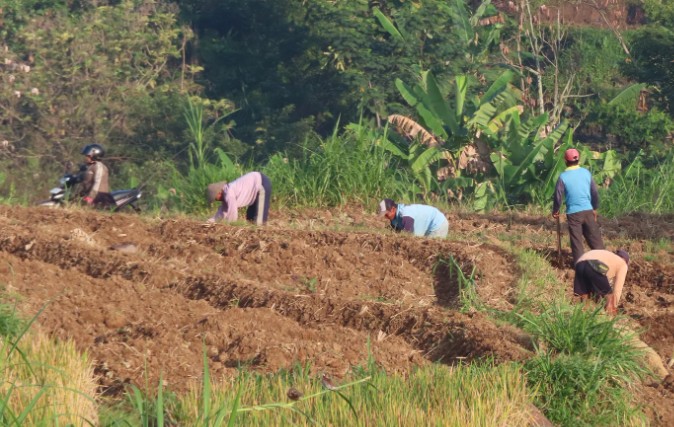
Table: Tool Checklist (Budget vs Premium Options)
| Tool | Budget Option (£) | Premium Option (£) |
| Spade/Shovel | 10 – 20 | 30 – 50 |
| Turf Cutter Rental | 30/day | 50/day |
| Landscape Rake | 15 – 25 | 35 – 60 |
| Spirit Level | 10 – 15 | 25 – 40 |
| Garden Roller | 25 – 40 | 60 – 100 |
How Do I Plan Before Starting to Level the Garden?
I learned quickly that planning makes all the difference. Here’s how I prepared:
- Measured the slope using a string line and spirit level
- Marked reference points with stakes and string
- Decided whether I needed retaining walls (I didn’t, but sloped gardens might)
Proper planning also helped me determine how much topsoil I’d need and whether water would flow away from my house — drainage is key.
Step-by-Step Guide: How to Level a Garden?
This is where the actual phase started. I split it down into quite easier, manageable steps.
Step 1: Remove Existing Turf or Grass
Using a turf cutter, I stripped away the existing lawn. You can also use a spade, but it’s more labour-intensive. I rolled up the turf and reused some in other parts of my garden.
Step 2: Measure the Area and Set Reference Points
I used pegs and string lines to create a grid across the garden, making it easier to visualise the high and low spots. This helped keep everything level and accurate.
Step 3: Adjust the Soil – Fill or Remove as Needed
I dug away soil from high areas and moved it to the lower patches. Where that wasn’t enough, I added topsoil to even it out. I used a wheelbarrow to move everything efficiently.
Step 4: Spread and Compact the Topsoil
Using a rake, I spread the topsoil evenly. Then I lightly watered the soil and used a garden roller to compact it, repeating the process twice for a firm, level base.
Step 5: Ensure Proper Drainage
I made sure the garden had a slight gradient (about 1–2% slope away from the house) to encourage water runoff. Garden grading is essential, especially in rainy UK climates.
Step 6: Rake and Level the Surface
Finally, I raked the surface smooth, checked levels again using a spirit level, and made small adjustments where needed.
Key Dos and Don’ts:
- Do check drainage before you start
- Do compact the soil in layers
- Don’t skip measuring and marking
- Don’t add too much topsoil without compacting
Table: Soil Depth Guidelines
| Garden Use | Minimum Soil Depth |
| Lawn (grass) | 10 – 15 cm |
| Flower beds | 20 – 30 cm |
| Vegetable patches | 30 – 40 cm |
How to Level a Garden Without a Digger?
When I first started this project, I didn’t have access to a mini digger — nor did I want to rent one due to cost and the logistics of getting it into my small garden.
So, if you’re wondering how to level a garden without a digger, here’s exactly how I did it:
Manual Levelling Tools I Used:
-
Shovel – for digging and removing soil
-
Pickaxe – handy for breaking compacted ground
-
Wheelbarrow – to transport soil from high spots to low ones
-
Rake – for spreading and smoothing
-
Garden roller – to compact manually
-
String line and stakes – to check level visually
My Process Without a Digger:
-
Marked high and low areas using pegs and string
-
Dug out high points with a spade, broke up compacted areas with a pickaxe
-
Moved excess soil using a wheelbarrow and filled in the dips
-
Spread topsoil across the surface and compacted in layers
-
Repeated the process slowly over a few weekends
It was more labour-intensive, but completely doable for a medium-sized garden. I saved hundreds of pounds by not hiring machinery, and honestly, the sense of achievement was worth the sweat!
Tip: If you’re working on a slope or larger area, break the job into small zones and level each one before moving on.
How Do I Know If the Garden Is Properly Levelled?
After raking and compacting, I used a spirit level on a straight plank to test different sections. You could also use a laser level if you’re aiming for precision.
If water pools after a light rain, it’s a sign of uneven spots that may need another layer of soil and compaction.
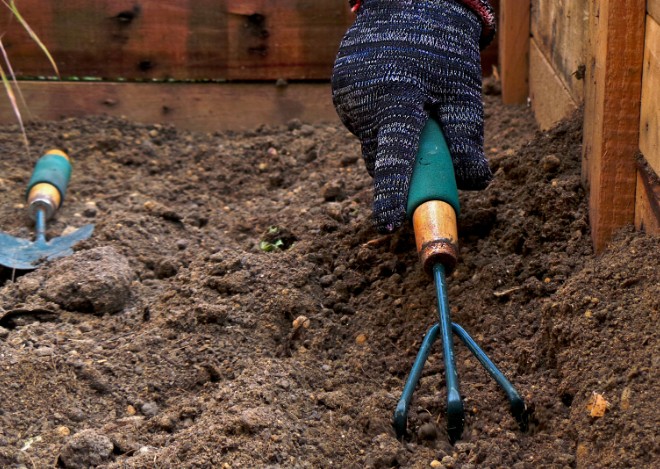
Should I Re-Turf or Seed After Levelling?
I had to decide between laying turf or sowing grass seed. Here’s how I approached it:
- Turf: Instant results, but more expensive
- Seed: Cheaper and easier to apply, but takes longer
I opted for turf in high-traffic areas and seed in others. Either way, water consistently and avoid walking on it for at least 2–3 weeks.
What Are the Common Mistakes When Levelling a Garden?
Here’s what I almost got wrong — and how I avoided it:
- Skipping drainage planning – water pooling can ruin your work
- Using poor-quality topsoil – always go for screened topsoil
- Not compacting properly – loose soil sinks and creates dips
- Levelling without marking reference points
Avoiding these saved me time and rework later.
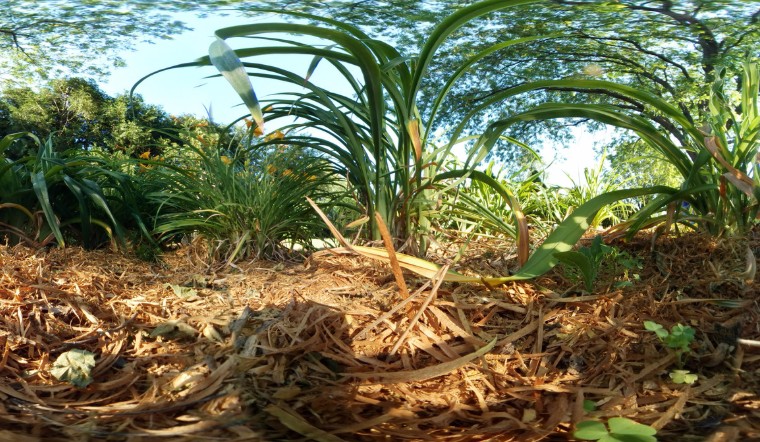
How Much Does It Cost to Level a Garden in the UK?
The cost depends on garden size, soil needs, and tools. Here’s a rough idea:
Table: Estimated DIY Garden Levelling Costs
| Item/Service | Estimated Cost (UK) |
| Topsoil (per m³) | £40 – £80 |
| Turf Cutter Rental | £30 – £50/day |
| Tools (buy or rent) | £60 – £120 |
| Grass Seed or Turf | £20 – £100+ |
| Optional Labour Help | £100 – £300 |
Doing it myself saved a lot, but it took 2–3 weekends of effort.
Can I Level a Garden by Myself or Should I Hire Help?
If your garden is mildly uneven and you’re comfortable with manual work, it’s totally doable on your own. I did it solo with the help of some hired tools and a few YouTube tutorials.
For heavily sloped gardens, hiring a professional landscaper might be wiser — especially if retaining walls, drainage systems, or large turfing areas are involved.
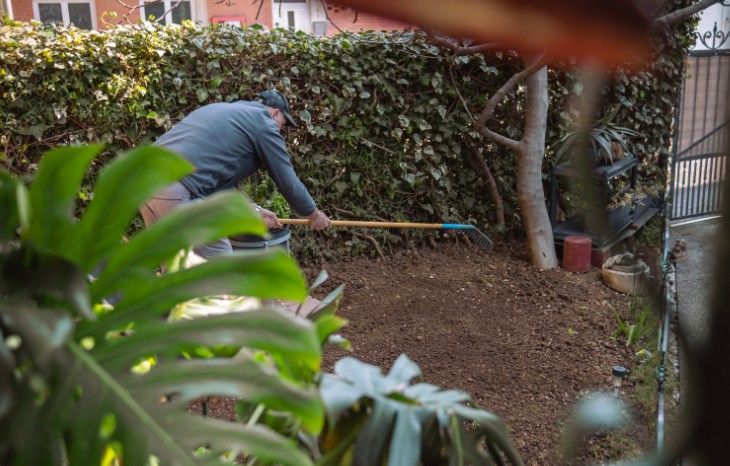
Final Thoughts – My Experience with Garden Levelling
Looking back, I’m really proud of the result. It was hard work, but seeing a neat, level garden with good drainage and healthy grass made it all worthwhile. If you’re wondering how to level a garden, I’d say: plan well, use the right tools, and take your time. It’s absolutely worth the effort.
Frequently Asked Questions (FAQs) On How to Level a Garden
1. Can I level my garden without removing the turf?
Yes, but it depends on how uneven your garden is. For small dips, you can top-dress with soil and reseed. For larger changes, removing the turf is more effective.
2. How long does it take to level a garden in the UK?
For a standard-sized garden (around 50–100m²), it can take 2–3 days for prep and levelling, plus additional time for turfing or seeding and letting the soil settle.
3. Do I need planning permission to level my garden?
In most cases, no — unless you are significantly altering the elevation or adding structures like retaining walls over a certain height.
4. What type of topsoil is best for levelling?
Use screened topsoil, which is free from debris and ideal for lawns. Look for soil with a mix of sand and loam for better drainage and root growth.
5. Is it better to level a garden in spring or autumn?
Both seasons are suitable. I did mine in spring, which allowed for strong grass growth. Autumn also works well due to moist soil and cooler temperatures.

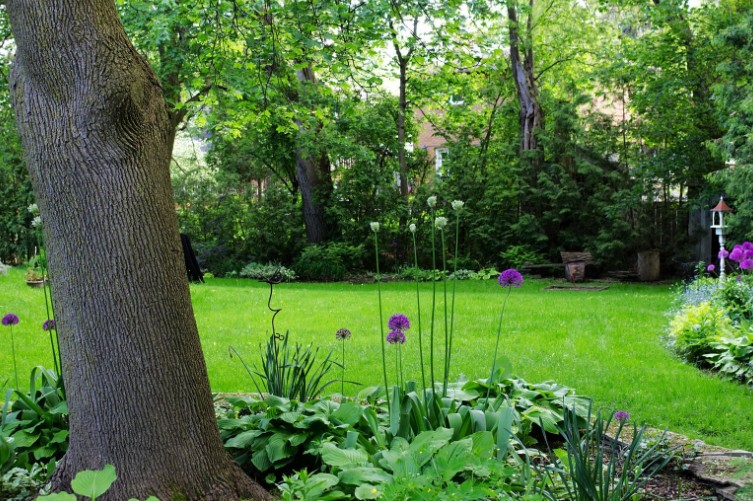
0 Comments